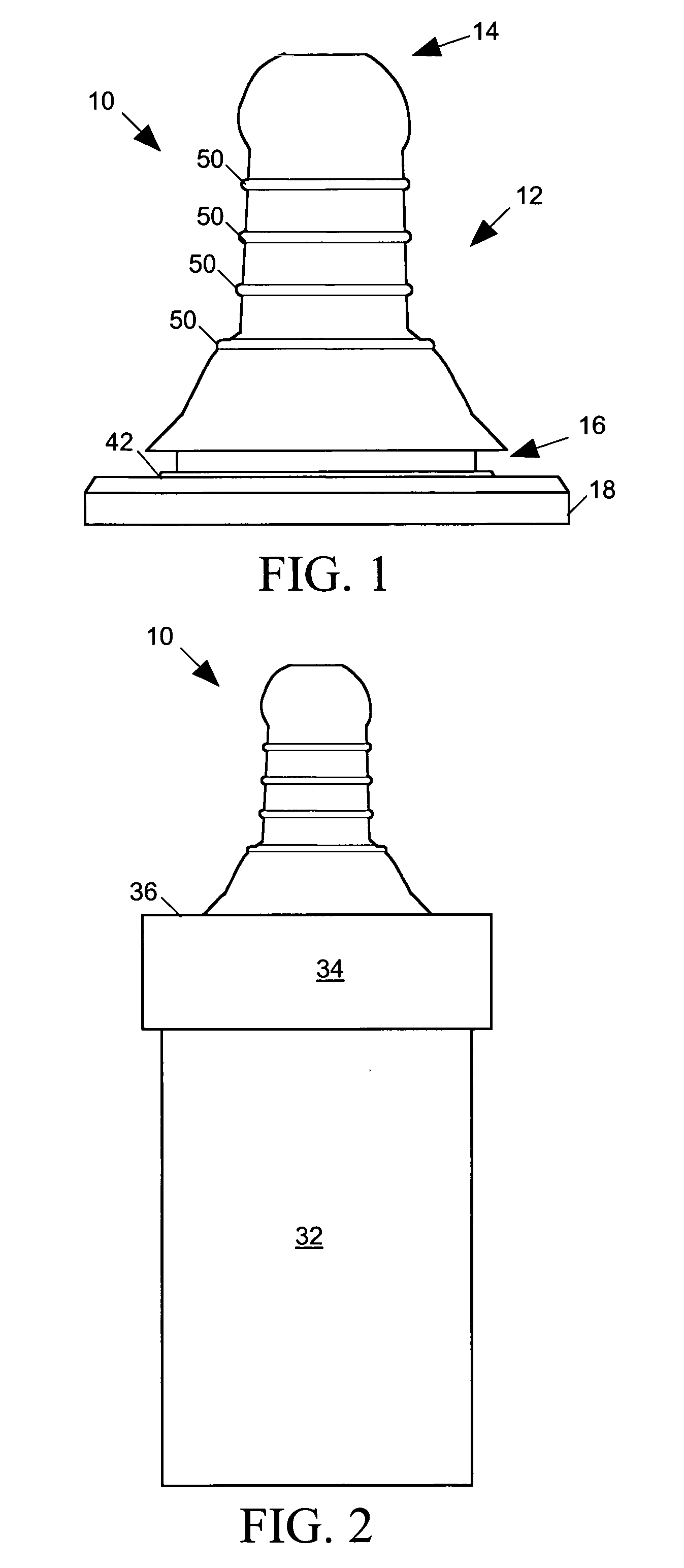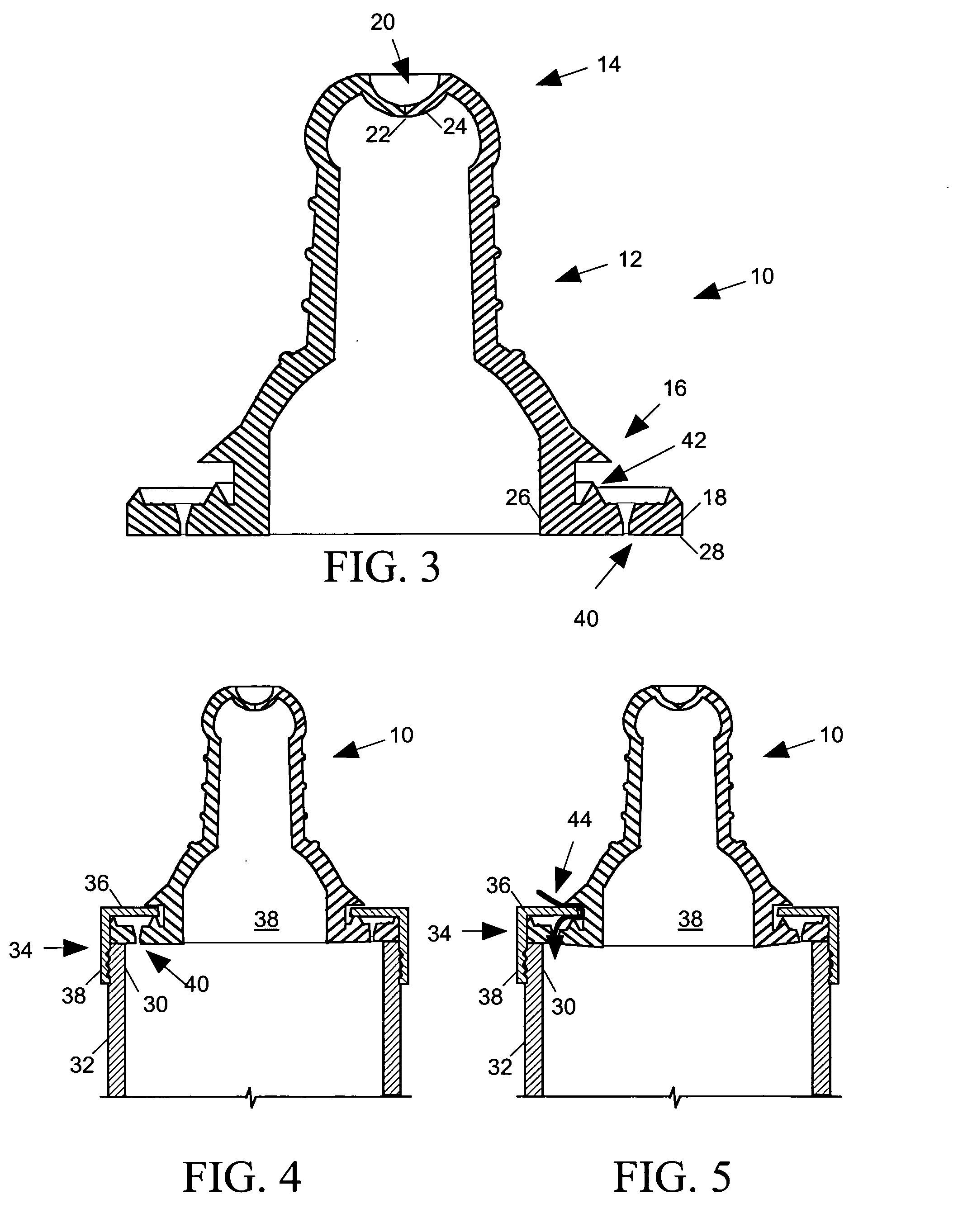Vented, low-drip nursing nipple
a nursing nipple and low-drip technology, applied in the field of nursing bottles, can solve the problems of poor replacement of the real thing, poor sealing effect of the hard ceramic nipple, and major spillage, so as to prevent leakage, improve the sealing effect, and limit the effect of fluid leakag
- Summary
- Abstract
- Description
- Claims
- Application Information
AI Technical Summary
Benefits of technology
Problems solved by technology
Method used
Image
Examples
Embodiment Construction
[0058] The present invention relates to a nursing bottle having an air inlet aperture and a liquid outlet aperture that opens when an infant is nursing and closes to reduce leakage when the infant stops nursing. The nursing bottle also includes an air inlet valve that opens to vent the bottle when the infant is nursing and then closes when the infant stops nursing to inhibit liquid leakage. While the specification describes at least one exemplary embodiment of the invention considered to be a best mode of practicing the invention, the invention is not limited to the exemplary embodiment(s) described below or to the manner in which the exemplary embodiments operate.
[0059] Referring to FIGS. 1-6, nipple 10, formed of resilient, flexible material such as natural or synthetic rubber or plastic, includes a hollow nipple body 12 having a distal end 14, a proximal end 16 and an annular flange 18 attached to the proximal end of the nipple body. The distal end 14 of nipple body 12 includes ...
PUM
 Login to View More
Login to View More Abstract
Description
Claims
Application Information
 Login to View More
Login to View More - R&D
- Intellectual Property
- Life Sciences
- Materials
- Tech Scout
- Unparalleled Data Quality
- Higher Quality Content
- 60% Fewer Hallucinations
Browse by: Latest US Patents, China's latest patents, Technical Efficacy Thesaurus, Application Domain, Technology Topic, Popular Technical Reports.
© 2025 PatSnap. All rights reserved.Legal|Privacy policy|Modern Slavery Act Transparency Statement|Sitemap|About US| Contact US: help@patsnap.com



